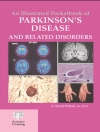Psychiatric disorders in adolescents are an important social problem which is relevant to almost all healthcare professionals. According to the results of The National Comorbidity Survey-Adolescent Supplement (NCS-A), the lifetime prevalence of anxiety, behavior, mood, and substance use disorders among adolescents was 31.9%, 19.1%, 14.3%, and 11.4%, respectively. Approximately 40% of participants in this survey with one class of disorder also met criteria for another class of lifetime disorder. Comorbidity is increasingly recognized as a key feature of mental disorders among adolescents. Female adolescents are more likely than males to have mood and anxiety disorders, but less likely to have behavioral and substance use disorders.
Regretfully, medical professionals are not sufficiently trained about adolescent psychiatric disorders. For example, primary care providers correctly identify less than a fourth of youth with a depressive or anxiety disorder. Also, many clinicians underestimate the importance of the problem of adolescent psychiatric illnesses and suicidal behavior. Lack of skilled medical providers impedes the delivery of needed services to adolescents with mental health issues. This coupled with a lag in the ability of primary health care services to incorporate psychiatric interventions, and a failure of public health initiatives to pay attention to adolescent mental health problems has led to continuing gaps in care over decades despite the public pronouncements of needs.
In this book you will find relevant information for health professionals, since we believe that the mental health of adolescents is essential for sustaining healthy and productive societies.
Mengenai Pengarang
Leo Sher, James J. Peters Veterans’ Administration Medical Center, Bronx, New York, USA; Joav Merrick, Ministry of Social Affairs and Social Services, Jerusalem, Israel.












